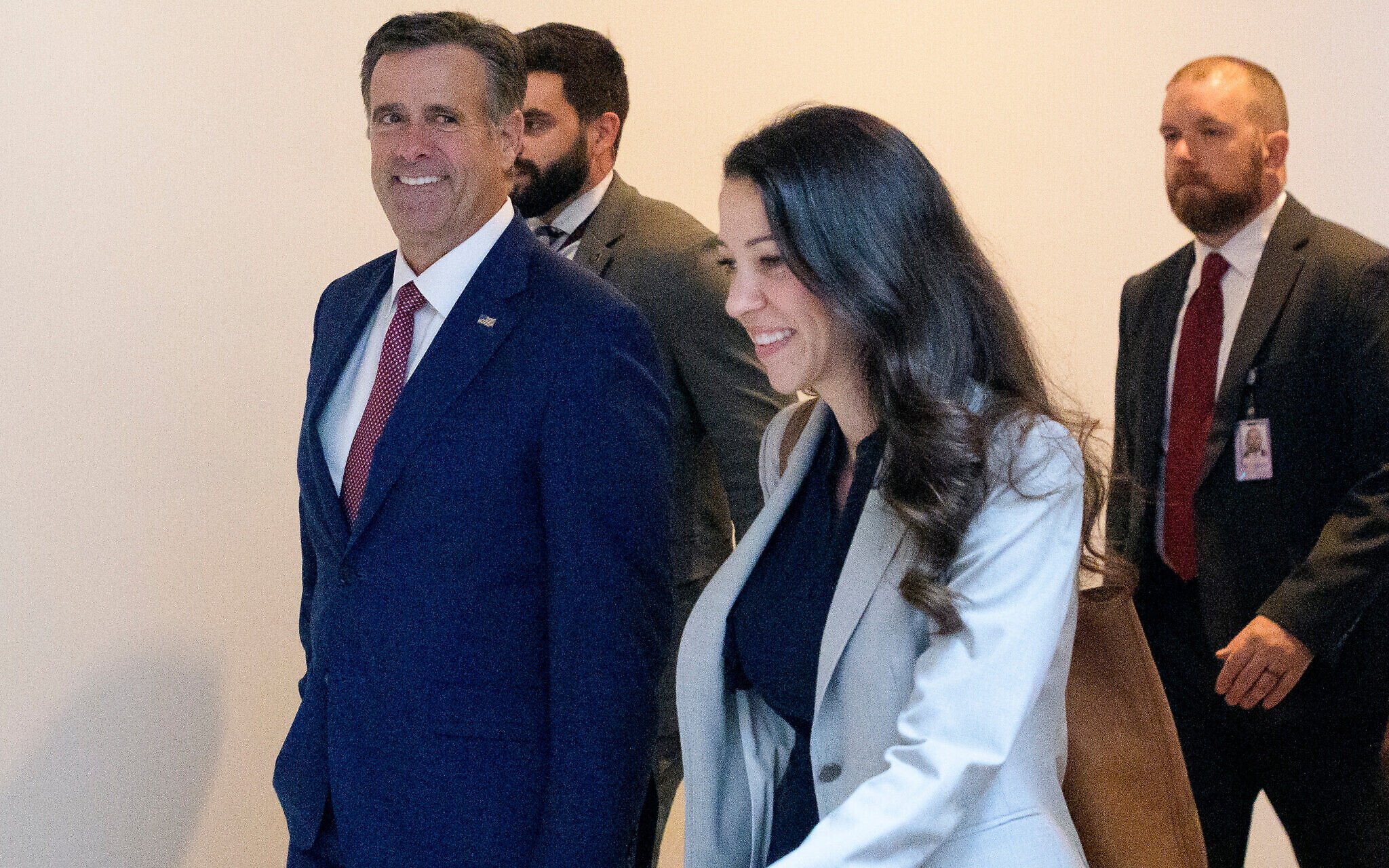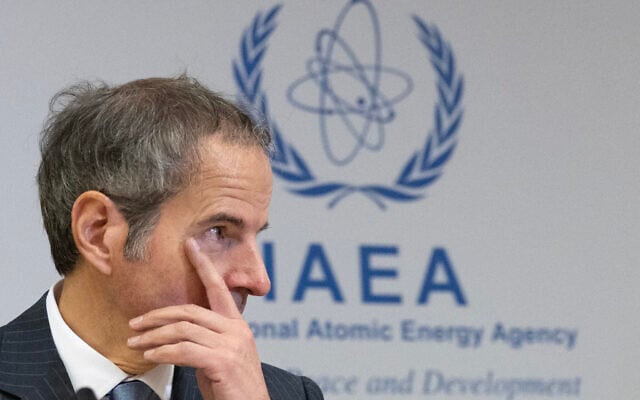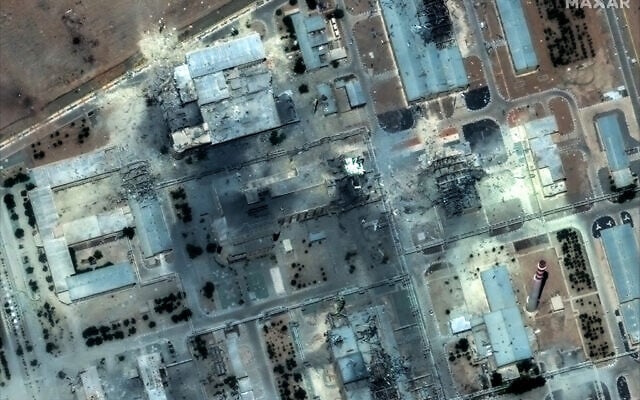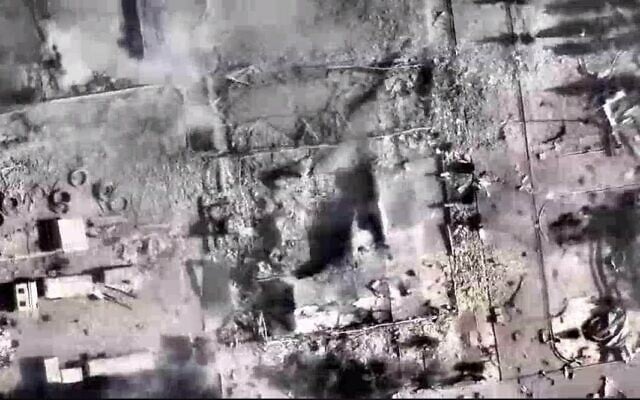



CIA Director John Ratcliffe told skeptical US lawmakers that American military strikes destroyed Iran’s lone metal conversion facility and in the process delivered a monumental setback to Tehran’s nuclear program that would take years to overcome, a US official said Sunday.
The official, who spoke on the condition of anonymity to discuss the sensitive intelligence, said Ratcliffe laid out the importance of the strikes on the metal conversion facility during a classified hearing for US lawmakers last week.
Details about the private briefings surfaced as President Donald Trump and his administration keep pushing back on questions from Democratic lawmakers and others about how far Iran was set back by the strikes before last Tuesday’s ceasefire with Israel took hold.
“It was obliterating like nobody’s ever seen before,” Trump said in an interview on Fox News Channel’s “Sunday Morning Futures.” ”And that meant the end to their nuclear ambitions, at least for a period of time.”
Ratcliffe also told lawmakers that the intelligence community assessed the vast majority of Iran’s amassed enriched uranium likely remains buried under the rubble at Isfahan and Fordo, two of the three key nuclear facilities targeted by US strikes.
But even if the uranium remains intact, the loss of its metal conversion facility effectively has taken away Tehran’s ability to build a bomb for years to come, the official said.
Rafael Grossi, head of the International Atomic Energy Agency, said Sunday on CBS’ “Face the Nation” that the three Iranian sites with “capabilities in terms of treatment, conversion and enrichment of uranium have been destroyed to an important degree.”
But, he added, “some is still standing” and that because capabilities remain, “if they so wish, they will be able to start doing this again.” He said assessing the full damage comes down to Iran allowing in inspectors.
“Frankly speaking, one cannot claim that everything has disappeared, and there is nothing there,” Grossi said.
Appearing on the same CBS program, Iran’s ambassador to the UN vowed the Islamic Republic “will never stop” enriching uranium.
“The enrichment is our right, an innate right, and we want to implement this right,” said Amir Saeid Iravani.
Trump has insisted from just hours after three key targets were struck by US bunker-buster bombs and Tomahawk missiles that Iran’s nuclear program was “obliterated.”
His defense secretary, Pete Hegseth, has said they were “destroyed.” A preliminary report issued by the US Defense Intelligence Agency, meanwhile, said the strikes did significant damage to the Fordo, Natanz and Isfahan sites, but did not totally destroy the facilities.
As a result of Israeli and US strikes, Grossi says that “it is clear that there has been severe damage, but it’s not total damage.” Israel claims it has set back Iran’s nuclear program by “many years.”
The metal conversion facility that Ratcliffe said was destroyed was located at the Isfahan nuclear facility. The process of transforming enriched uranium gas into dense metal, or metallization, is a key step in building the explosive core of a bomb.
Secretary of State Marco Rubio in comments at the NATO summit last week also suggested that it was likely the US strikes had destroyed the metal conversion facility.
“You can’t do a nuclear weapon without a conversion facility,” Rubio said. “We can’t even find where it is, where it used to be on the map. You can’t even find where it used to be because the whole thing is just blackened out. It’s gone. It’s wiped out.”
The CIA director also stressed to lawmakers during the congressional briefing that Iran’s air defense was shattered during the 12-day assault. As a result, any attempt by Iran to rebuild its nuclear program could now easily be thwarted by Israeli strikes that Iran currently has little wherewithal to defend against, the official said.
Ratcliffe’s briefing to lawmakers on the US findings appeared to mesh with some of Israeli officials’ battle damage assessments.
Israeli officials have determined that Iran’s ability to enrich uranium to a weapons-grade level was neutralized for a prolonged period, according to a senior Israeli military official who was not authorized to talk publicly about the matter.
Tehran’s nuclear program also was significantly damaged by the strikes killing key scientists, damage to Iran’s missile production industry and the battering of Iran’s aerial defense system, according to the Israeli’s assessment.
In conversations intercepted by the United States, Iranian government officials say the US strikes on its nuclear facilities were less destructive than they expected, the Washington Post reported Sunday, citing four people familiar with the matter.
The conversations that were “intended to be private,” according to the report, revealed that Iranian officials were wondering why the attacks were not as destructive as they thought they would be.
Last week, an Israeli official with knowledge of intelligence told Axios that Iranian military officials were downplaying the damage caused by strikes in their reports to the government.
Despite the physical damage to the Iranian nuclear program, Grossi, and some Democrats, note that Iran still has the know-how.
“You cannot undo the knowledge that you have or the capacities that you have,” Grossi said Sunday, emphasizing the need to come to a diplomatic deal on the country’s nuclear program.
Also Sunday, Israeli television reported one of the main reasons that prompted Israel to attack Iran this month was a deeply worrying “breakthrough” by Iran in its nuclear weapons program that would have enabled it to build a nuclear bomb in a much shorter time than Israel had previously believed.
A group of scientists were working secretively on the development of nuclear weapons in a manner that “deeply troubled” Israeli experts and decision-makers, according to Channel 12 news, which noted that it was broadcasting the news within the limitations of Israeli military censorship.
There was a need to thwart this initiative and target the scientists involved, the report said. The scientists “were indeed eliminated.”
The Iranian breakthrough, combined with the fact that Iran had stockpiled 408 kilograms (900 pounds) of uranium enriched to 60 percent, the report said, meant Israel assessed that Iran could break out to the bomb far more quickly than previously estimated.



